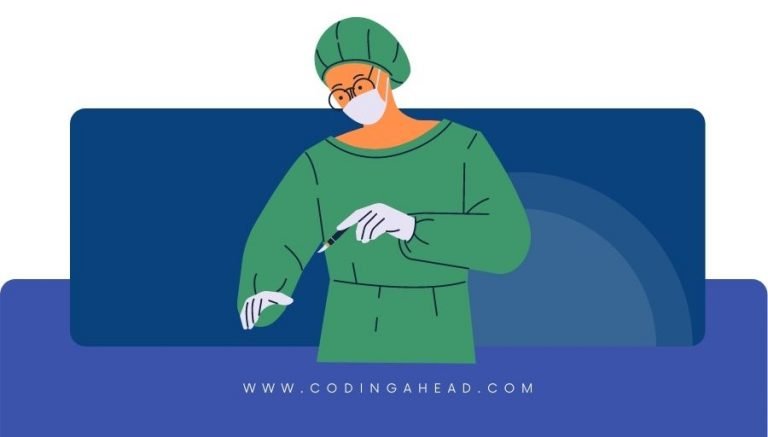How To Use CPT Code 94010
CPT 94010 is a code used for spirometry, a pulmonary function test that measures the functionality of the lungs. This article will cover the description, procedure, qualifying circumstances, appropriate usage, documentation requirements, billing guidelines, historical information, similar codes, and examples of CPT 94010 procedures.
1. What is CPT 94010?
CPT 94010 is a code used to represent spirometry, a pulmonary function test that assesses the functionality of a patient’s lungs. This test is essential for diagnosing and monitoring respiratory disorders such as chronic obstructive pulmonary disease (COPD), asthma, and pulmonary fibrosis.
2. 94010 CPT code description
The official description of CPT code 94010 is: “Spirometry, including graphic record, total and timed vital capacity, expiratory flow rate measurement(s), with or without maximal voluntary ventilation.”
3. Procedure
The 94010 procedure involves the following steps:
- The patient is asked to stand or sit up straight.
- The patient breathes in deeply and then blows hard into the spirometer’s mouthpiece for 5 to 6 seconds until their lungs are completely empty of air.
- The technician may repeat this test several times to obtain the best result.
- The spirometer measures the flow and volume of air during inhalation and exhalation, displaying the results as a graph.
- The physician interprets the results to assess the patient’s respiratory function.
4. Qualifying circumstances
Patients who are eligible to receive CPT code 94010 services are those experiencing symptoms or have a medical history that suggests the presence of a respiratory disorder. These may include shortness of breath, wheezing, chronic cough, or a history of smoking. Additionally, patients with known respiratory conditions such as COPD, asthma, or pulmonary fibrosis may require spirometry testing for monitoring and treatment purposes.
5. When to use CPT code 94010
It is appropriate to bill the 94010 CPT code when a patient requires spirometry testing to diagnose, monitor, or evaluate their respiratory function. This may be due to the presence of symptoms, a medical history suggesting a respiratory disorder, or the need to monitor an existing respiratory condition.
6. Documentation requirements
To support a claim for CPT 94010, the following information should be documented:
- Patient’s demographic information, including name, date of birth, and insurance information.
- Medical history and presenting symptoms that indicate the need for spirometry testing.
- Physical examination findings related to the respiratory system.
- Details of the spirometry procedure, including the number of attempts and the best result obtained.
- Interpretation of the spirometry results by the physician, including any diagnoses or treatment recommendations.
7. Billing guidelines
When billing for CPT code 94010, it is essential to follow the appropriate guidelines and rules. Ensure that the patient meets the qualifying circumstances for spirometry testing and that the necessary documentation is in place to support the claim. Additionally, be aware of any specific payer requirements or policies related to billing for spirometry services. Do not report CPT 94010 in conjunction with codes 94150, 94200, 94375, or 94728.
8. Historical information
CPT 94010 was added to the Current Procedural Terminology system on January 1, 1990. There have been no updates to the code since its addition.
9. Similar codes to CPT 94010
Five similar codes to CPT 94010 and how they differ are:
- CPT 94011-94013: These codes are used for pulmonary function testing on infants and children, whereas CPT 94010 is for adults.
- CPT 94014-94016: These codes represent patient-initiated spirometry over a 30-day period, while CPT 94010 is for a single spirometry test.
- CPT 94150: This code is for a vital capacity test as a separate procedure, not included in CPT 94010.
- CPT 94200: This code is for a test of maximum breathing capacity/maximal voluntary ventilation, which is different from the spirometry test in CPT 94010.
- CPT 94375: This code is for respiratory flow volume loop studies, which are distinct from the spirometry test in CPT 94010.
10. Examples
Here are 10 detailed examples of CPT code 94010 procedures:
- A 55-year-old patient with a history of smoking presents with shortness of breath and wheezing. The physician orders a spirometry test to evaluate the patient’s lung function.
- A 40-year-old patient with a known diagnosis of asthma requires spirometry testing to monitor their condition and adjust treatment as necessary.
- A 65-year-old patient with COPD undergoes spirometry testing to assess the severity of their condition and determine the appropriate treatment plan.
- A 30-year-old patient presents with a chronic cough and shortness of breath. The physician orders a spirometry test to rule out any underlying respiratory disorders.
- A 50-year-old patient with a history of occupational exposure to dust and chemicals undergoes spirometry testing to evaluate their lung function and screen for any respiratory issues.
- A 45-year-old patient with a family history of pulmonary fibrosis undergoes spirometry testing as part of a routine screening for early detection of the condition.
- A 60-year-old patient with a known diagnosis of COPD requires spirometry testing to monitor their condition and evaluate the effectiveness of their current treatment plan.
- A 35-year-old patient with a history of recurrent respiratory infections undergoes spirometry testing to assess their lung function and determine if there is any underlying respiratory disorder.
- A 70-year-old patient with a known diagnosis of asthma requires spirometry testing to monitor their condition and adjust treatment as necessary.
- A 25-year-old patient with a history of smoking presents with shortness of breath and wheezing. The physician orders a spirometry test to evaluate the patient’s lung function and screen for any respiratory issues.



